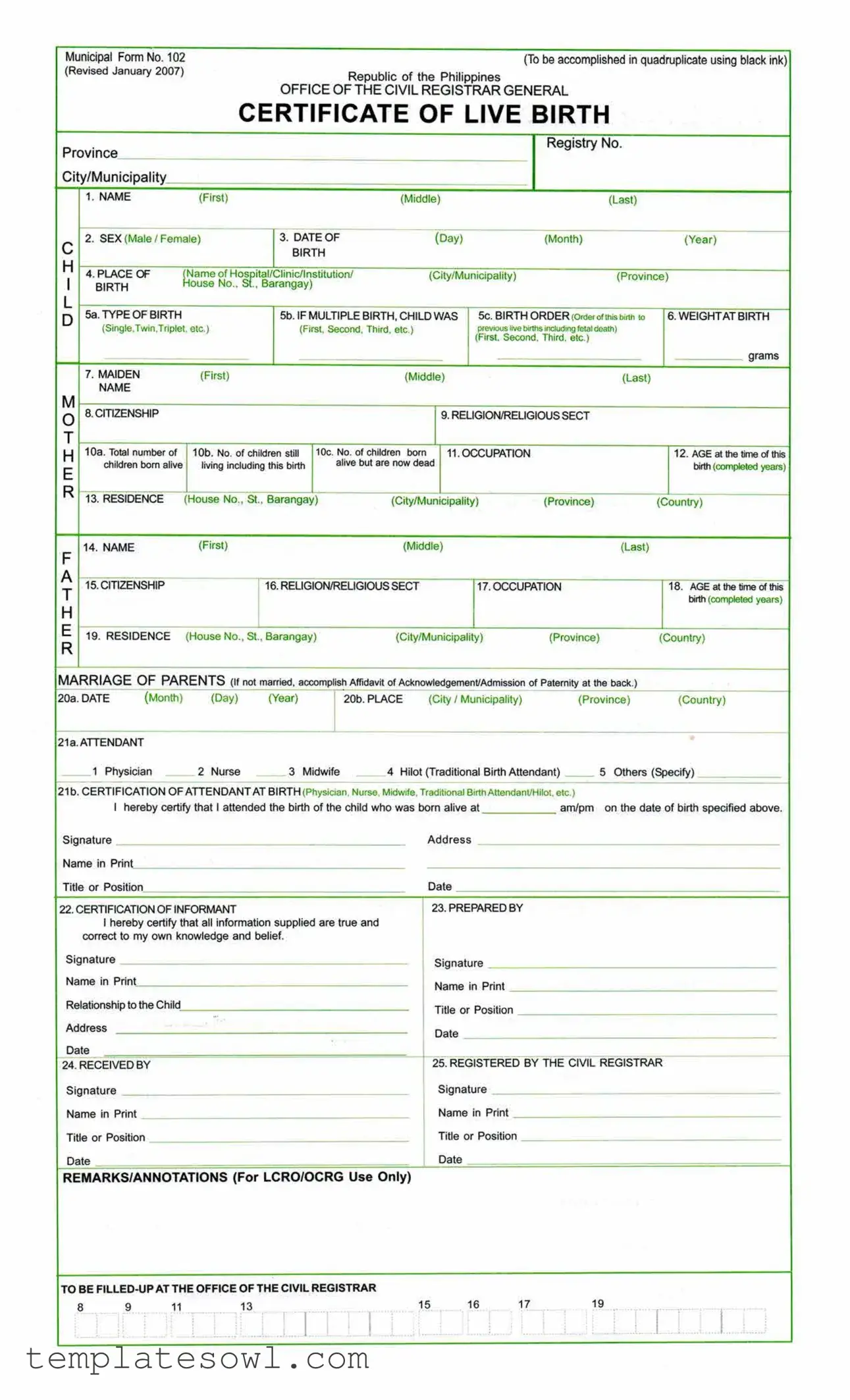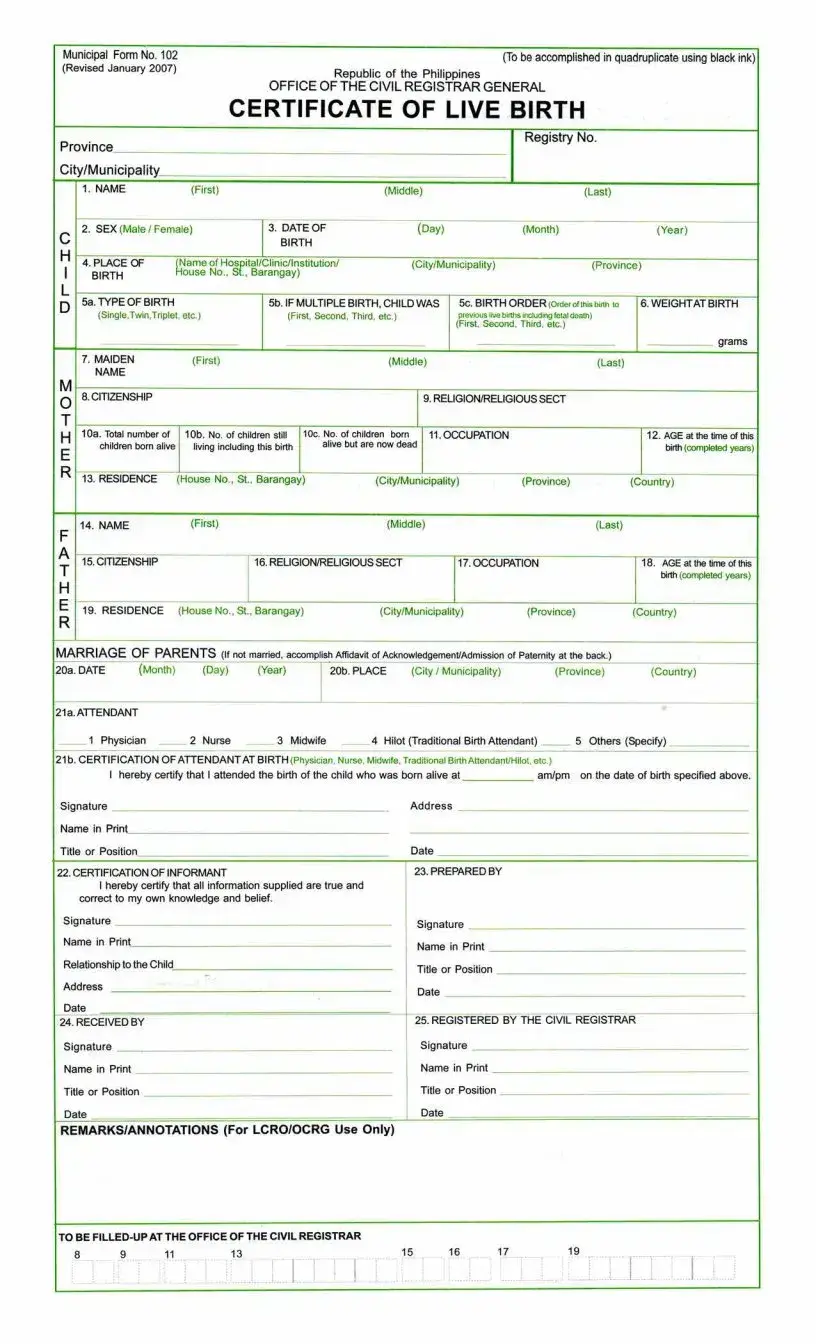What is the purpose of the Municipal 102 form?
The Municipal 102 form, known as the Certificate of Live Birth, serves as an official document that records the birth of a child. It provides essential information about the child, including their name, date of birth, and details about their parents. This form is crucial for legal identification and registration purposes, often required for obtaining a birth certificate.
Who is responsible for completing the Municipal 102 form?
The parents of the newborn or their authorized representative are typically responsible for filling out the Municipal 102 form. They need to provide accurate information regarding the child and themselves to ensure the document reflects true facts. In cases where parents are not married, an affidavit acknowledging paternity may also be required.
What information is required on the Municipal 102 form?
The form requires detailed information, including the child’s full name, sex, date of birth, place of birth, and the names and occupations of the parents. Additionally, it includes questions regarding the type of birth (single or multiple), weight at birth, and the order of birth among siblings. Complete and legible answers are essential to avoid delays in processing the registration.
Is there a specific format to fill out the form?
Yes, the Municipal 102 form should be filled out completely, accurately, and legibly. It is recommended to use ink or a typewriter. For certain fields like items 2, 5A, 5B, and 19A, an “X” should be placed before the appropriate answer to indicate the selection clearly. This systematic approach helps ensure that all necessary details have been provided correctly.
How many copies of the Municipal 102 form are needed?
The Municipal 102 form must be accomplished in quadruplicate, meaning four copies should be prepared. This allows the local civil registrar to retain a copy while the others may be needed for the parents’ records or for other legal purposes.
What happens after the Municipal 102 form is submitted?
Once the Municipal 102 form is submitted to the Office of the Civil Registrar, it undergoes a verification process to confirm the information provided. If everything is in order, the birth will be officially registered, and a birth certificate will be issued. It’s important to keep a record of this process, as it provides a legal acknowledgment of the child's identity.
Can the Municipal 102 form be amended after submission?
If there are any errors or changes needed after the form has been submitted, amendments can sometimes be made. However, the process for amendments might vary depending on local regulations, and it typically involves providing supporting documentation and possibly completing additional forms. It’s advisable to consult the civil registrar for specific guidance.
What if the birth is not registered on time?
If a birth is not registered within the required timeframe, a delayed registration may be necessary. This involves completing an Affidavit for Delayed Registration of Birth and providing reasons for the delay. It is important to address this as soon as possible to ensure the child has proper legal documentation.


